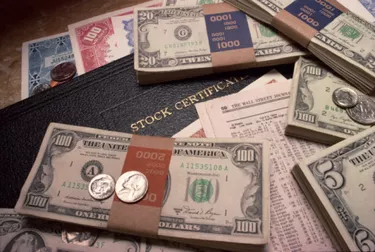
Paid-up capital is the initial capital investment contributed to a new corporation by its founding shareholders. Any excess capital above the par value of the common stock is considered additional paid-up capital. Paid-up capital and additional paid-up capital can be found on the company's balance sheet under "shareholders' equity." To calculate paid-up capital, a company must determine the par value of common stock and the number of shares issued to the founding shareholders.
Step 1
Divide the initial capital investment by the amount of shares the founding shareholders currently own, which will equal the par value share price. Let's assume that the company has $10,000 initial capital that represents 10,000 shares owned by the founding shareholders. In the calculation, $10,000 divided by 10,000 equals a $1 par value share price. The par value share price represents the lowest price at which the company stock can be sold or liquidated.
Video of the Day
Step 2
Determine the number of shares the company has issued to the public shareholders. This can be located on the balance sheet under "outstanding shares." Let's assume the number of outstanding shares is 100,000.
Step 3
Multiply the outstanding shares by the issued share price for the public shareholders. You can find this price in the stock offering documents used to raise capital for the company. This will be called public capital. In the calculation, assume a $3 issued share price (paid by the public shareholders). The result is 100,000 outstanding shares times $3 equals $300,000.
Step 4
Add the public capital to the initial capital investment made by the founding shareholders, and you have calculated the paid-up capital. In the calculation, $300,000 (public capital) plus $10,000 (initial capital) equals $310,000 (total paid-up capital). For additional paid-up capital, subtract the issued share price from the par value share price and multiply that by the number of common shares issued.
Video of the Day